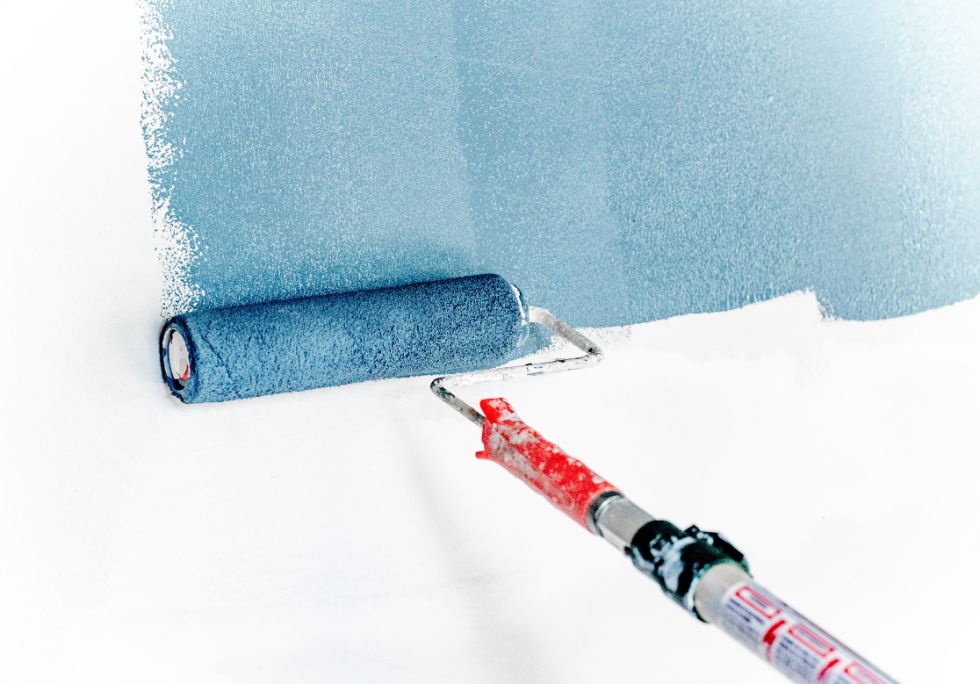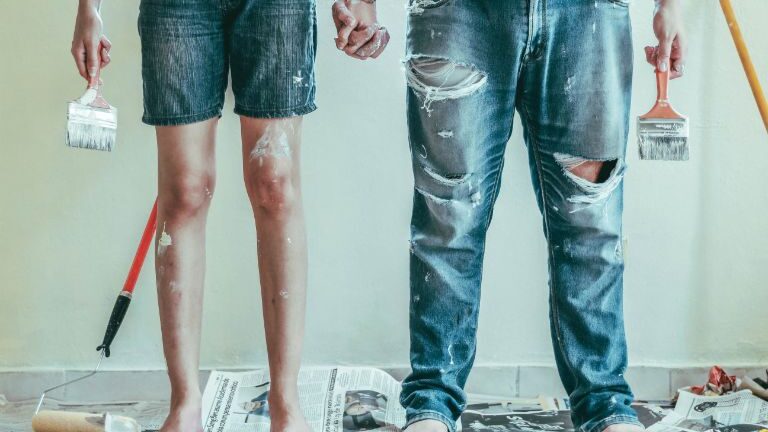Paint fumes can linger for days or weeks after painting, even if you adequately ventilated the space. Here are eleven common, environmentally friendly products that can be used to get rid of the smell of paint.
Regardless of whether it is an exterior paint, an interior emulsion, or a texture paint, all paints contain ingredients that emit irritating fumes. Newly painted homes are particularly prone to the issue of offensive odor. The best way to get rid of the smell is typically to make sure there is adequate ventilation. But occasionally the smell lingers longer than usual.
While selecting a paint formula with low VOCs can lessen the likelihood of this result, fumes are frequently still noticeable. Anyhow, if you ever find yourself in this predicament, here’s how to get rid of the paint smell.
Simple Ways to Get Rid of Paint Smells
Here are some of the best ways to get rid of paint odor in your home:
Keep the Room Well Ventilated

Keep the room’s airflow constant by keeping the windows and doors open. The fumes can be expelled by placing a few rotating fans in the space, angled toward an open window.
When you have finished painting and the surface is touch dry, turn on the fans.
Use Coffee Grounds
You probably have coffee grounds ready to go if you drink coffee. Take the used coffee grounds and place them in small containers after brewing your morning cup. After that, distribute the containers all around the space.
When it comes to airborne particles, including those that cause paint fumes, coffee grounds are very absorbent. Even though you might need to do it several times in a row, they should quickly pick up the scent.
Additionally, your room will smell like coffee afterward, which may or may not be a plus in your book.
Place Baking Soda Around the Room
Baking soda can be used to absorb paint fumes as well as odors from the refrigerator and laundry. The powder should be poured into small bowls and dispersed throughout the space.
Baking soda can be disposed of after painting by pouring it down the drain or through the garbage disposal to quickly clean your plumbing.

If the paint smell is still present, sprinkle some baking soda on the carpet and upholstered furniture in the room and let it sit overnight. In the morning, vacuum the powder and smells away.
Set Out Bowls of Vinegar
To enjoy vinegar’s odor-removal advantages, you don’t require full buckets. Place bowls of white vinegar around the space after simply pouring it in. The molecules that carry odors are neutralized by the acetic acid in vinegar. For quicker results, substitute household white vinegar (10% acetic acid) for culinary white vinegar (5% acetic acid).
Grab a Bag of Charcoal
In a pinch, grill briquettes will do, but for quicker fresh air, buy activated charcoal from the hardware store. In order to increase the porousness of activated charcoal and give odor-causing molecules more places to go (and be absorbed), high heat is used to treat the material. Place the aluminum baking pans with the charcoal inside and let them sit overnight.
Use Onions
Another food that quickly removes odors from the environment is onions. Even paint fumes can be effectively removed using it. Cut any leftover onions in half, then scatter the pieces all over your room. The onion is better the bigger it is. Using more than one onion in a small space is probably not a good idea.
Not making the room smell like onions, but getting rid of the paint odor, is the objective. You can always add more onions if it doesn’t work the first time; just start with fewer than you think you’ll need.
Keep Your House Cool

The temperature should be cool regardless if the windows are open and the room is well-ventilated.
The heating should not be turned on, however, if you are painting in the winter. As a result, the paint fumes are reduced to a minimum.
Experiment With Diatomaceous Earth
Imagine this white, chalky powder—which is composed of fossilized plankton—as a silica packet the size of a room. In actuality, the high silica content of diatomaceous earth is what gives it its natural ability to absorb odors and moisture.
Choose food-grade diatomaceous earth instead of conventional diatomaceous earth, which can irritate lungs and possibly harm animals. It can be found online or occasionally at hardware stores. Afterward, pour it into bare coffee cans or disposable aluminum baking pans.
Leave Out Bowls of Lemon Water
Water will naturally absorb VOCs, but adding some slices of fresh lemon juice will produce a crisp, refreshing citrus scent. Plan to leave the bowls of lemon water in the room throughout the night because water takes a little longer to absorb odors.
Put Drops of Natural Extracts on Cotton Balls
Vanilla and peppermint are two of the most effective natural extracts for getting rid of paint odor and reviving the air in the room. Simply apply a few drops of the extract to cotton balls before arranging them in little saucers or bowls and dispersing them throughout the space.
Before beginning the project, some painting professionals swear by adding a drop or two of the extracts directly to the paint can reduce the smell.
Put Some Candles
The best way to get rid of paint odor is with scented candles. Your home will be odor-free in a few hours if you simply light the candle. The best part is that there are many different flavors of scented candles, so you can pick the one you prefer the most.

Tips to Prevent Heavy Paint Fumes
You can lessen the smell and simplify the process by taking care of paint fumes before you even start painting a room.
- While it may not always be possible, choosing paint with low or no VOCs is a healthy alternative that will help you avoid strong fumes. If you must use oil-based paint or primer, go for the low-odor varieties. Additionally, paints can be produced using clay, milk, minerals, or plants.
- Check the weather forecast before you start painting your house. Prevent going outside on humid days. Paint releases its strongest odor while being applied and waiting to dry, and high air humidity slows down the drying process. The likelihood that soft materials (carpet, drapes, and upholstery) will absorb the odors increases with drying time.
- Prior to adding the subsequent coat of paint, let the previous coat completely dry. Damp walls can keep odors trapped and slowly release them for a longer period of time. Keep the paint can lid on while painting, and when not in use, cover paint trays and brushes with plastic wrap.
- If you can, leave the doors and windows open while painting one room to allow the fumes to escape into the air. However, close the doors to the other rooms in your home to stop the fumes from spreading. The same advice should be used when removing paint for a project.
You may be interested in these painting questions:
- How Long Does it Take to Paint a Room?
- How Long Does Spray Paint Take to Dry?
- Can You Use Interior Paint Outside?
- How To Clean Your Paint Brush And Roller Cover?
- Can You Use Masonry Paint On Wood?
- How To Get Spray Paint Off Concrete?
- Does A Painted Black Window Block Light?
Conclusion: Plan Ahead for Your Next Project
Select a zero-VOC paint for your upcoming project to save yourself the hassle and headaches. These formulas are a necessity for those who are sensitive to smells, but they are also a great option for nurseries and children’s rooms, rooms where there may not be enough ventilation, such as bathrooms, rooms where you spend a lot of time, such as bedrooms, and rooms where you have young children.
It is crucial that you hire the best paint company as a homeowner to paint your house. The skilled painters will ensure that you don’t face any health risks while also giving your house a lovely and appealing appearance. We also have lists of the best paint brushes and the best paint removers for you.





